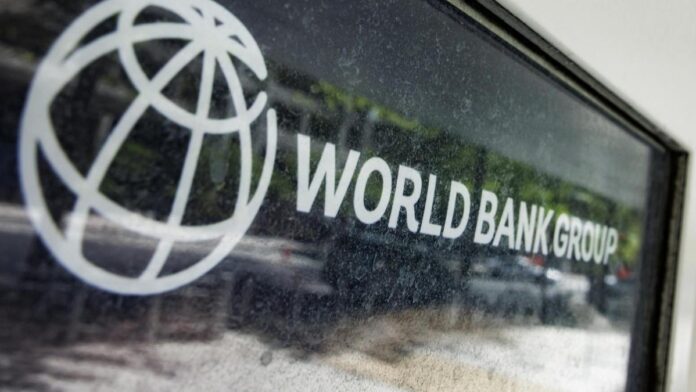The World Bank cut India’s growth projection by 40 bps to 6.3% for 2025-26, as the benefits to private investment from monetary easing and regulatory streamlining are expected to be offset by global economic weakness and policy uncertainty.
On Tuesday, the International Monetary Fund (IMF) cut India’s growth projection by 30 basis points (bps) to 6.2% for FY26, citing higher trade tensions and global uncertainty.
World Bank has also cut India’s growth projection by 50 basis points for FY25 to 6.5% for FY25 because of slower growth in private investment and public capital expenditures that did not meet government targets.
“GDP growth is expected to slow from 6.5% in FY24/25 to 6.3% in FY25/26,” the multilateral agency said in its South Asia Development Update.
“The benefits to private investment from monetary easing and regulatory streamlining are expected to be offset by global economic weakness and policy uncertainty,” the Bank said.
Private consumption is expected to benefit from tax cuts, and the improving implementation of public investment plans should boost government investment, but export demand will be constrained by shifts in trade policy and slowing global growth.
In the FY26 budget, the Centre sharply raised the income tax exemption limit to Rs 12 lakh from Rs 7 lakh in the new tax regime, which the government said would leave around Rs 1 lakh crore cash in the hands of taxpayers. This will likely aid consumption and demand in the economy.
On Tuesday, the IMF said the “near-universal” US tariffs, which raised effective tariff rates to levels not seen in a century, on their own, are a major negative shock to world growth. The IMF cut its projection for global output growth this year to 2.8%, down from its January forecast of 3.3% and would be the slowest expansion of gross domestic product since the Covid-19 pandemic in 2020.
The World Bank said the Indian economy was unexpectedly weak around the middle of 2024 but regained its footing by the end of the year. Manufacturing growth was sluggish, and public investment growth fell short of budget projections. Consumption growth accelerated thanks to robust employment growth and increasing real wages, particularly in rural areas.
Declining food price inflation helped lower headline inflation to 3.6% in February 2025, close to the middle of the Reserve Bank of India’s 2–6% target range and substantially below the recent peak of 6.2% in October 2024.
India’s current account deficit has narrowed to about 1% of GDP. Moderating inflation and limited external financing needs allowed the Reserve Bank to support domestic demand by cutting its policy rate by 25 basis points in February—its first policy cut in almost five years. The Indian rupee’s value in terms of the U.S. dollar held steady between mid-2022 and the end 2024, partly supported by foreign exchange market intervention by the central bank.
India’s equity markets have grown rapidly in recent years, in terms of both listings and valuations, and have attracted significant, although volatile, net inflows. In 2024, India led the world in the number of initial public offerings (IPOs) and was second only to the United States in the value of new listings, the World Bank said.
Equity derivatives markets have grown particularly quickly, prompting interventions from regulators concerned about investor protection. Since peaking late last year, however, stock market valuations have undergone a correction. For now, this has not had broader ripple effects, but the decline in equity prices could dampen private consumption or investment over the medium term, it added.



